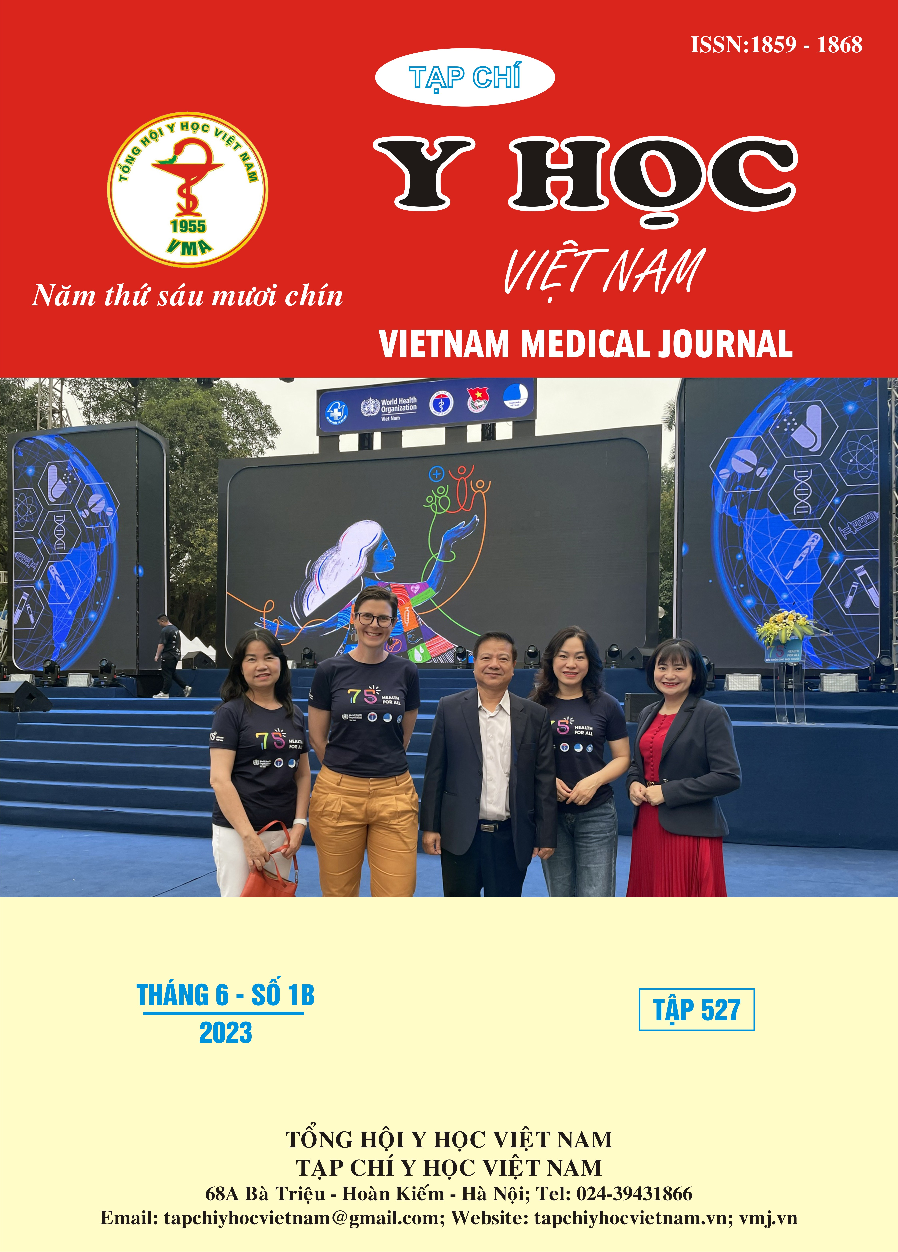FEATURES OF PARTIAL HYDATIDIFORM MOLE PATIENTS AT TU DU HOSPITAL
Main Article Content
Abstract
Background: Partial hydatidiform mole (PHM) are undertood to be at low risk of becoming malignancy because of the low likelihood of progression to gestional trophoblastic neoplasia (GTN). In Viet Nam, there has been few studies of PHM with small sample size. Acknowledging rate of postmolar GTN in PHM patients improves consultation, prophylatic treatment and follow-up. Objectives: The study aimed to determine the gestational trophoblastic neoplasia (GTN) rate and associated factors associated of partial hydatidiform mole (PHM). Methods: This is a retrospective cohort study with 370 patients who were diagnosed PHM based on histology by uterine evacuation at Tu Du hospital from 01/2020 to 12/2021. Results: Followed-up by 1 year, 21 patients developed GTN, the incidence of GTN was 5.7% (95%CI: 3.5-8.4). The median time progressed GTN was 4,67±2,23 weeks. The highest rate of GTN was recognized at the third an sixth week after evacuation. Applying multivariate model, the rate of GTN was significantly higher in group of patients who had history of miscarriage/abortion (HR=2.84 95%CI:1.05-7.69). Conclusions: The rate of postmolar GTN in PHM patients was 5.7%. Patients who had history of miscarriage/abortion were 2.84 times more likely to develop GTN than patients who did not.
Article Details
Keywords
partial hydatidiform mole, gestational trophoblastic neoplasia.
References
2. Feltmate C.M., Growdon W.B., Wolfberg A.J., et al. Clinical characteristics of persistent gestational trophoblastic neoplasia after partial hydatidiform molar pregnancy. The Journal of reproductive medicine. 2006;51(11):902-906.
3. Nguyễn Thị Kim Mai, Trần Lệ Thuỷ (2020), Diễn tiến nồng độ βhCG sau hút nạo thai trứng theo các hình thái lâm sàng của bệnh lý nguyên bào nuôi. Luận án Thạc sĩ y học, Đại học Y Dược TP.HCM.
4. Nguyễn Vũ Quốc Huy. Nghiên cứu một số yếu tố nguy cơ của bệnh thai trứng và giá trịcủa βHCG trong tiên lượng bệnh thai trứng. Tạp chí Phụ Sản. 2013;11(4):45-49.
5. Bakhtiyari M., Mirzamoradi M., Kimyaiee P., et al. Postmolar gestational trophoblastic neoplasia: beyond the traditional risk factors. Fertility and sterility. 2015;104(3):649-654.
6. Messerli M.L., A.M. L, Parmley T, Woodruff J.D., Rosenshein N.B. Risk factors for gestational trophoblastic neoplasia. American journal of obstetrics and gynecology. 1985;153(3):294-300.
7. Parazzini F, Mangili G, La Vecchia C, et al. Risk factors for gestational trophoblastic disease: a separate analysis of complete and partial hydatidiform moles. Obstetrics & Gynecology. 1991;78(6):1039-1045.
8. Baltazar J.C. Epidemiological features of choriocarcinoma. Bull World Health Organ. 1976; 54(5):523.


